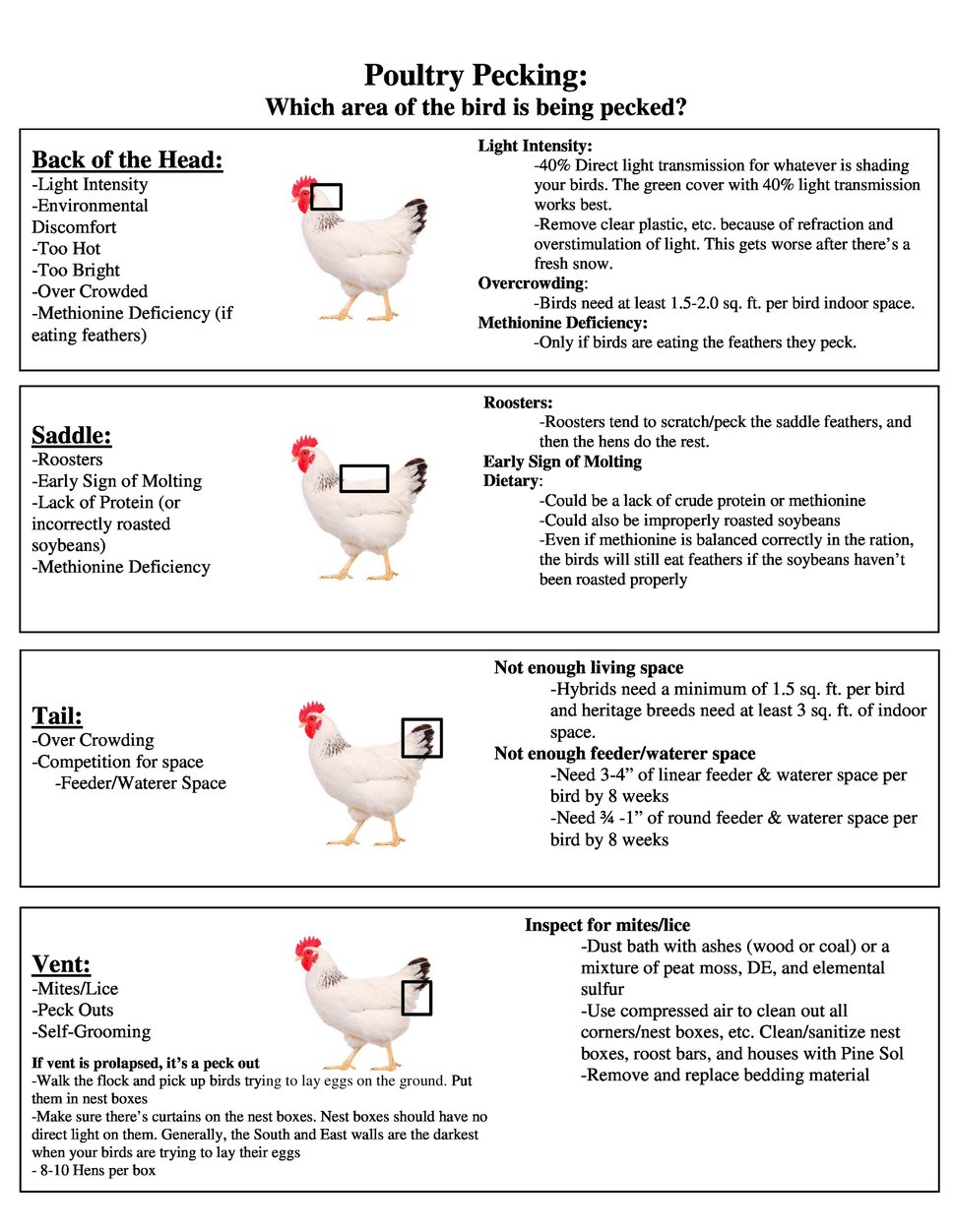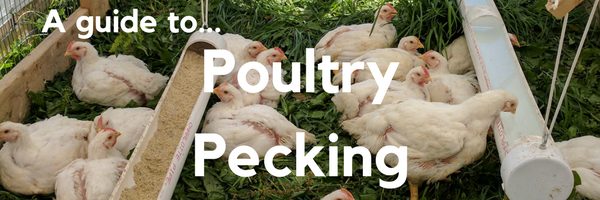Anyone that raises poultry- whether it be broilers, layers, or turkeys- has experienced pecking issues in their flock. What's not always clear is why the birds are pecking and how to stop it. The number one thing we hear in the office is "my birds are pecking eachother so there MUST be something wrong with my feed!!". Chances are, that's actually not the case. We've found that birds tend to peck more because of environmental reasons than because there's something wrong with your feed. Poultry pecking is avoidable if you know what to look for. The chart below comes straight from Jeff Mattocks and his 20 years of experience working with pastured flocks. Let's look at it in more detail.
 Back of the head pecking -- This is almost always caused by issues in the environment. As you can see from the chart, too light and too crowded are the biggest factors at play here, but there can be others.
Back of the head pecking -- This is almost always caused by issues in the environment. As you can see from the chart, too light and too crowded are the biggest factors at play here, but there can be others.
Saddle pecking -- Arguably, this one could be the feed. Whether it's not enough protein or your feed hasn't been balanced properly for the age and/or stage of production that your birds are in. Most often though, we see this because of roosters.
Tail feather pecking -- This is almost always a sign that your birds are too crowded. They may be too crowded in terms of overall square footage per bird or there could be too much competition for feeder and waterer space.
Vent pecking -- Usually caused by mites or lice, however in layer flocks it could be a peck out. If the vent is prolapsed, consider it a peck out. Otherwise, chances are you have mites or lice living in your nest boxes and it's causing your birds some irritation.
One of the most important things for you to notice is if your birds are eating the feathers they're pecking. Methionine is the #1 most important amino acid for poultry and a deficiency in it, either due to a lack of methioine in the diet overall or because of improperly roasted soybeans, will cause the birds to peck at feathers and eat them. It's usually pretty obvious if the birds are eating feathers or not. Just look at the ground. Do you see feathers or not? That's your answer. If you see your birds eating feathers, consider calling your feed mill and explaining what you're seeing in your flock.
Once you determine what the cause of the pecking is and have made the corrective actions to the environment or their feed, you may still have some pecking. Birds tend to form habits which need to be broken. One effective way to break a pecking habit is by using salt in the water. Use 1 oz/5 gallons of water for 3 days ONLY. Do not use this for longer than 3 days or you can end up causing a whole mess of other issues because the birds aren't drinking enough water. If you need to repeat the salt treatment again, use it 3 days on and 3 days off then 3 days on again. The added salt makes the blood taste less desirable so the birds tend to quit pecking for it.
Additionally, you can put vaseline on any open wounds that continue to be pecked. This will seal the wound from potential bacterial exposure while discouraging other birds from continuing to peck that spot. If birds are seriously hurt/bleeding, they may require additional care in a hospital pen.
Questions about pecking? Email us (Casey@fertrell.com or Jeffmattocks@fertrell.com) or comment below! We're always happy to help!
Interested in reading more from Jeff? Check out his book on Amazon!

Casey is a Livestock & Poultry Specialist with The Fertrell Company. She specializes in poultry and swine and has a love for turkeys like no other.

